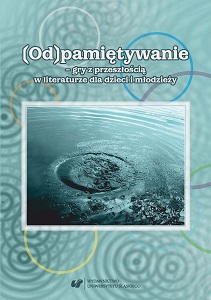(Auto)biograficzna przestrzeń pamięci (Ostatnie piętro Ireny Landau)
The (auto)biographical space of the memory (Ostatnie piętro by Irena Landau)
Author(s): Katarzyna Wądolny‑Tatar
Subject(s): Language and Literature Studies
Published by: Wydawnictwo Uniwersytetu Śląskiego
Keywords: Irena Landau; memory; post-memory; (auto)biographical space
Summary/Abstract: The writing strategy used by Irena Landau in the novel Ostatnie piętro for young readers exposes auto-/bio-/geographical connections, annihilating the autobiographical space (defined in the article after M. Czermińska) in its literary dimension. The narrative does not allow for the formation of topographical facts due to described in the novel difficult historical events, sometimes obliterated; the situation of hiding a Jewish child, when the disclosure of a specific address becomes impossible, multiple location changes, war destruction of Warsaw, which becomes deprived of its place specificity, turning into a ruined, open and empty space. Also the specified topographic and geographic resolutions are not indicated on the illustrations by Joanna Rusinek, which submit the city to a peculiar ellipse. Furthermore, “movable borders of autobiographicality” (also M. Czermińska’s expression) resulting from the memory condition and the age of the writer, as well as variable external conditions (for example historical and political), rather indicate the presence of the autobiographical space here. Both Landau’s narrative and Rusinek’s images contribute to the (auto)biographical space of the memory with the merits of mediation. The writer’s memory is located in the perspective of the post-memory of the youngest generation of the recipients of her works.
Book: (Od)pamiętywanie – gry z przeszłością w literaturze dla dzieci i młodzieży
- Page Range: 147-161
- Page Count: 15
- Publication Year: 2018
- Language: Polish
- Content File-PDF

